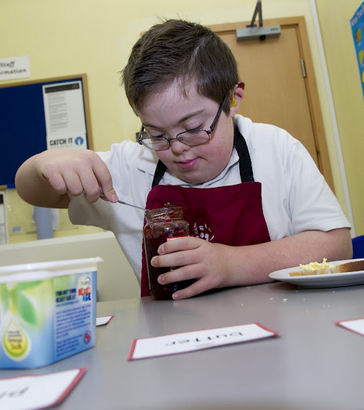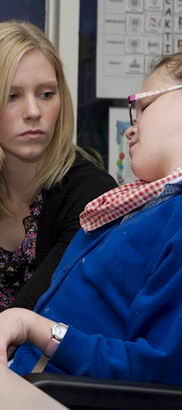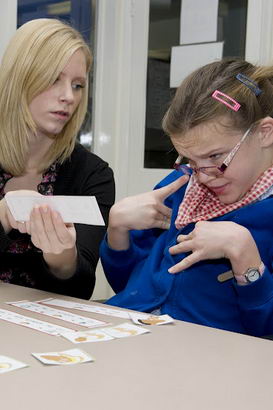
Task analysis is an essential tool for people working with pupils with learning difficulties. They can find even day-to-day tasks complicated and difficult to learn. Task analysis is incredibly useful both for teaching and assessing pupils' progress.
Task analysis breaks down the target behaviour into smaller steps that can be more easily taught. In the following slides we focus upon this process and encourage application of these skills in context.
The steps leading to the target behaviour may be best taught in a certain order. The concepts of 'forward chaining' and 'backward chaining' must be well understood.
Forward chaining – You might teach the steps from the beginning of the chain, requiring the pupil to display a gradually increasing number of the simple behaviours from the front of the chain. Thus, as the pupil learns a new behaviour in the sequence it gets added onto the tail end of the behaviours already mastered.
Backward chaining – You might decide to perform all of the chain of behaviours except for the last one which you require the pupil to do. When this last behaviour has been mastered, you do all of the steps for the pupil except for the last two behaviours. When these behaviours have been mastered you do all of the steps for the pupil, except the final three, and so on. The advantage of backward chaining is that the task as a whole has a more obvious meaning for the child and may be intrinsically rewarding.
task analysis (1)

Learning to do effective task analyses requires a good deal of practice and a preparedness to be flexible when teaching experience suggests a need to break down small steps into even smaller sub-steps.
The following document describes some ways of conducting a task analysis and reflect upon what might be most suited to you in your context.
How can you set about the task analysis? What processes help when devising the list of steps? You might do the task yourself noting the possible steps that lead to the final product or you could brainstorm with colleagues and the pupil's parents who may already have experience of teaching the target behaviour.
task analysis (2)

It is quite easy to do task analyses for basic self-care tasks (eg putting on socks, tying shoe laces, spreading butter on bread, making a cup of orange squash). Do a task analysis for each. Visualise how you do the activity as you do the task analysis. Consider which type of 'chaining' technique you might use. You will find that task analysis is not as easy as you might think, but the resulting descriptions of small steps can be incredibly useful both for teaching and assessing pupils' progress.
However, a different level of analysis is required for cognitive or linguistic tasks. Consider, for example, the development of the ability to identify line drawings as representations of familiar objects. Specify a target in terms of what behaviour the pupil should show and determine a series of small steps leading to it.
In the context of play activities with actual objects, you may wish to teach the following, for instance:
- Discrimination of three-dimensional objects. The child is presented with a cup and a brush, the adult holds up a brush and the pupil points to its matching item.
- Matching objects to full size colour pictures. Given a cup and a brush and full size colour photos of them, the child puts the objects on the corresponding photo.
- Discrimination of objects: full size colour pictures. The pupil selects the matching object from a choice of cup and brush when the adult shows a full size colour photo of the object.
- Matches objects: line drawings. The pupil can match the cup and brush to line drawings of them.
- Discrimination of objects: line drawings. The pupil can select the cup or brush as appropriate when shown a line drawing.